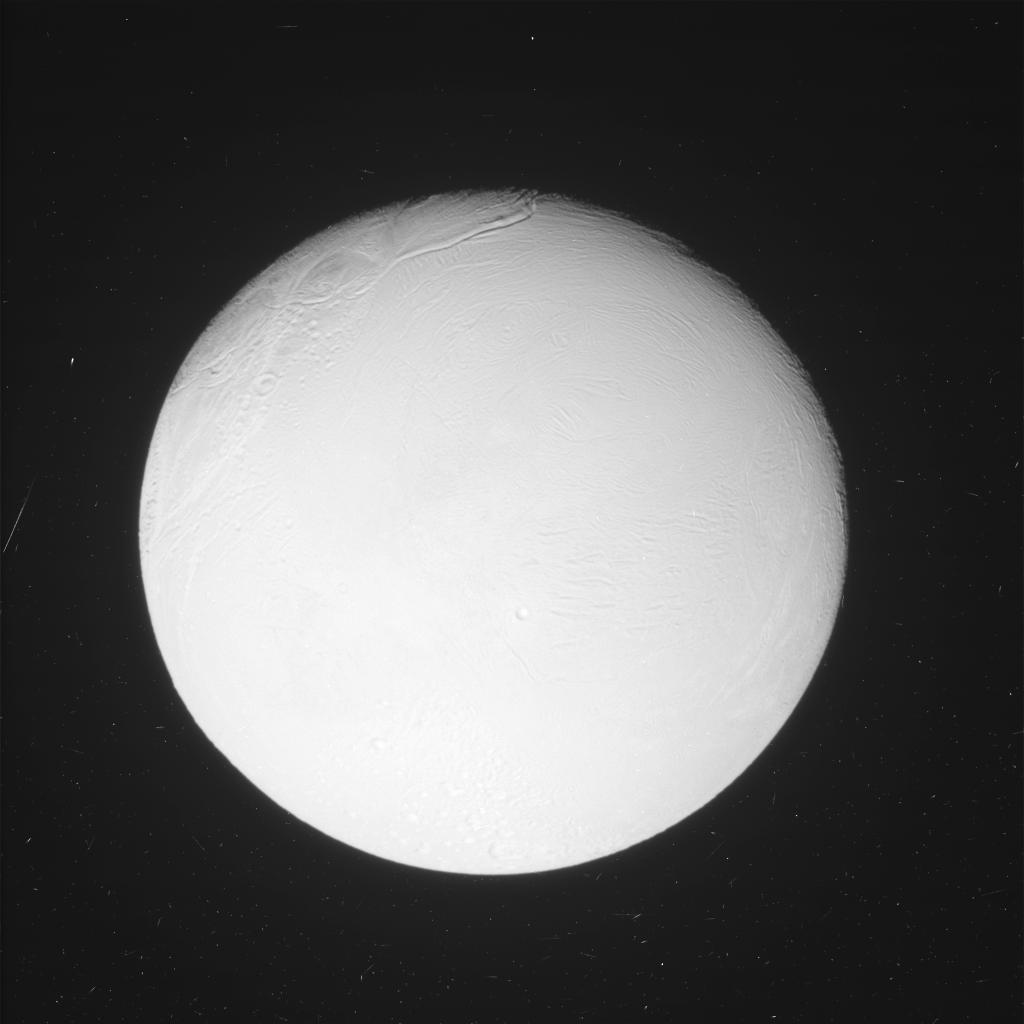Enceladus Flyby E-14 (Raw Image #2)

| Language |
|
|---|
NASA's Cassini spacecraft successfully completed its Oct. 1 flyby of Saturn's moon Enceladus, capturing these raw, unprocessed images of the moon and its dramatic plumes of water vapor and ice.
The spacecraft flew approximately 62 miles (100 kilometers) above the moon's surface. During the encounter, Cassini's high-resolution camera captured these spectacular images of the jets emanating from the moon's south polar region. The close approach of this flyby was designed to give some of Cassini's instruments, including the ion and neutral mass spectrometer, the chance to "taste" the plumes themselves.
The images of the jets have spatial resolutions ranging from two-thirds of a mile (1 kilometer) per pixel to 1,100 feet (350 meters) per pixel. The images of the surface show previously seen leading-hemisphere terrain. However, during this encounter, multi-spectral imaging of these terrains extended farther into the ultraviolet region of the electromagnetic spectrum than had previously been achieved at this resolution. By looking at the surface at ultraviolet wavelengths, scientists can better detect the difference between surface materials and shadows than they can at visible wavelengths where icy materials are highly reflective and shadows are washed out. With both ultraviolet and visible images of the same terrain available to them, scientists will better understand how the surface coverage of icy particles coming from the vents and plumes changes with terrain type and age.
Cassini's next pass of this fascinating moon will be Oct. 19, when the spacecraft flies by at an altitude of approximately 765 miles (1231 kilometers).
This image has not been validated or calibrated. A validated/calibrated image will be archived with the NASA Planetary Data System in 2012.
For more information on raw images check out our Frequently Asked Questions section.
Credit: NASA/JPL-Caltech/Space Science Institute
